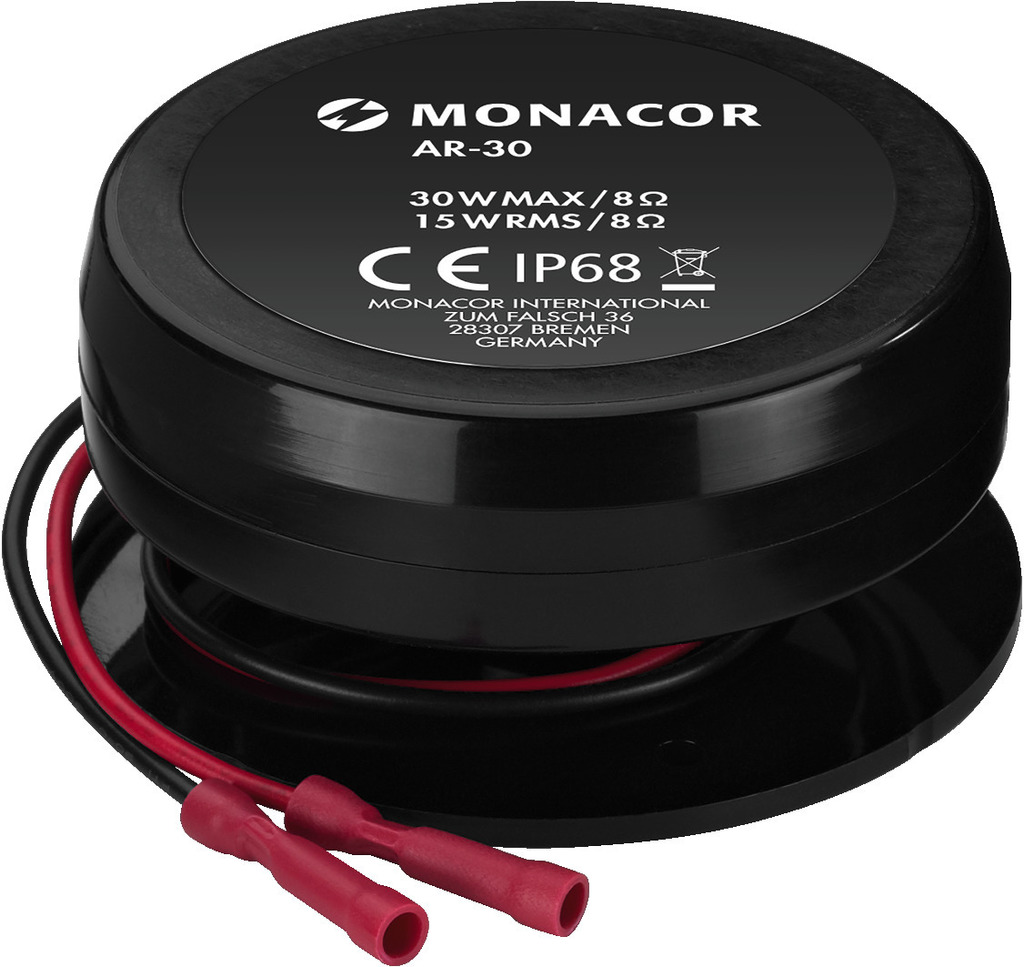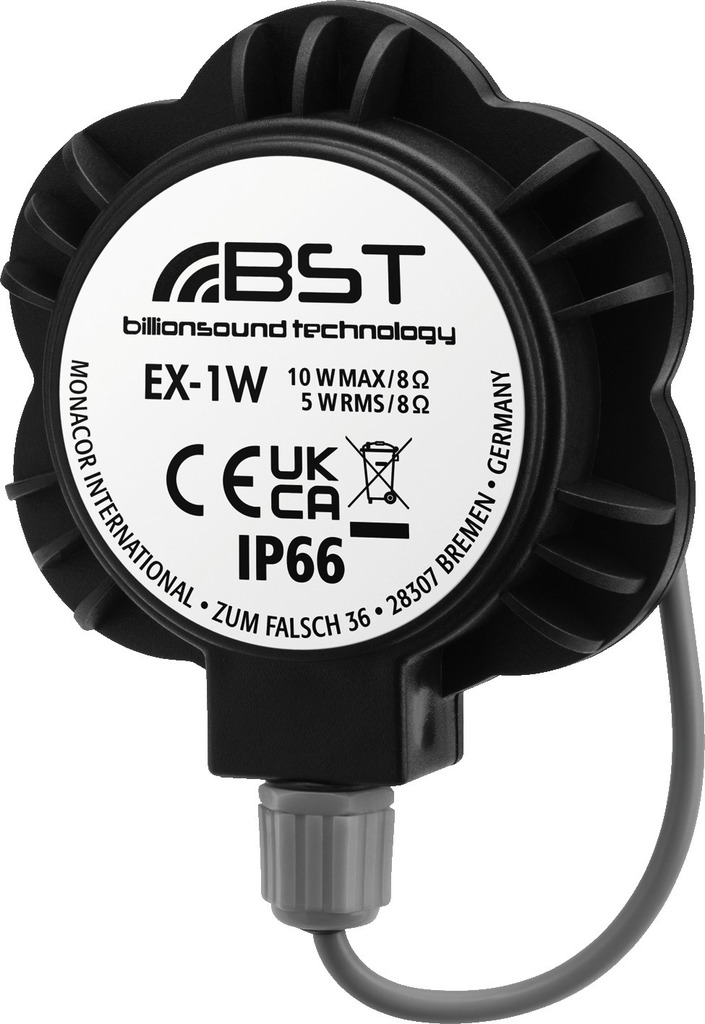The larger the plate, the fuller the sound, with an emphasis on the low-frequency components. Conversely, the sound appears thinner with smaller plates.
The weight of the plate is also important. Light plates are advantageous because the efficiency – the ratio between sound pressure levels and input power – decreases with increasing weight. Ideally, the plate should be rigid and made of a non-magnetic material. The reason is that exciters have a permanent magnet and would therefore be precharged.
The shape of the plate also has a big impact on the sound. Components with large surfaces often have a positive effect.
When wiring, you should make sure that the resonance of the cables does not cause any interference. The classic situation is where cables touch the mounting plate or a sensitive body in the vicinity due to the resulting movement. If necessary, covering the cables with foam helps.




